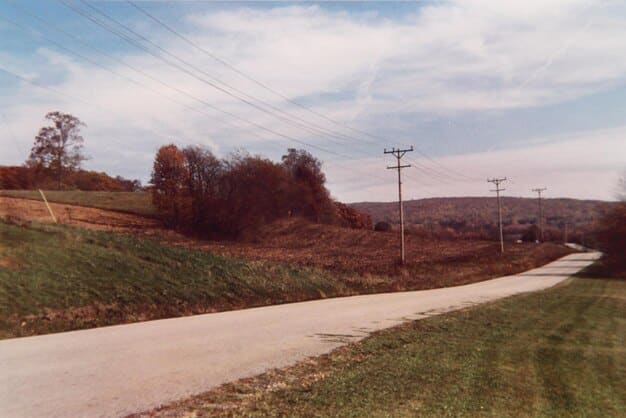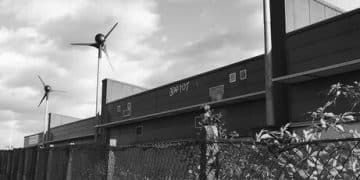US Infrastructure Bill: Impact on Transportation & Jobs

The Bipartisan Infrastructure Law, enacted in 2021, represents a monumental federal investment poised to significantly transform American transportation infrastructure and generate substantial job growth across various sectors nationwide.
The recent federal investment in infrastructure is poised to be a game-changer for the United States. How will the new infrastructure bill affect transportation and jobs across the US? This legislation promises to reshape the nation’s physical landscape and economic future, bringing both advancements and potential challenges.
The Bipartisan Infrastructure Law: A Historic Investment
The Bipartisan Infrastructure Law (BIL), also known as the Infrastructure Investment and Jobs Act (IIJA), signed into law in November 2021, represents the largest long-term investment in American infrastructure in generations. This ambitious legislation allocates over $1.2 trillion in federal funding, with approximately $550 billion designated for new spending over a five-year period. Its primary aim is to modernize and repair the nation’s crumbling infrastructure, fostering economic growth, enhancing competitiveness, and creating millions of well-paying jobs.
The law addresses a broad spectrum of infrastructure needs, moving beyond traditional roads and bridges to encompass a more comprehensive vision of a modern, resilient nation. This includes significant allocations for public transit, passenger and freight rail, airports, ports, waterways, broadband internet, electric vehicle charging infrastructure, and upgrades to the electric grid and water pipes. The scale of this investment reflects a bipartisan recognition of the urgent need to address decades of underinvestment in the foundational elements of the American economy.
Addressing Decades of Underinvestment
For many years, various reports and analyses, including those from the American Society of Civil Engineers (ASCE), have consistently highlighted the deteriorating state of U.S. infrastructure. Roads riddled with potholes, bridges deemed structurally deficient, outdated public transit systems, and an electrical grid vulnerable to outages have long been major concerns. The BIL directly confronts this backlog of neglected maintenance and necessary modernization.
- Roads and Bridges: A substantial portion of the funding is dedicated to repairing and rebuilding America’s roads and bridges, which currently face increasing wear and tear.
- Public Transit: Significant investments are aimed at improving existing transit systems and expanding access to public transportation options.
- Water Infrastructure: Funds are allocated to replace lead pipes and build resilient water systems, promoting public health.
This commitment to renovation and enhancement is not merely about fixing what is broken; it is also about building for the future. The law emphasizes aspects of climate resilience, cyber security, and equity, ensuring that infrastructure investments are sustainable and benefit all communities.
Strategic Goals of the Law
The strategic goals underpin every facet of the Bipartisan Infrastructure Law, shaping how these massive funds will be allocated and utilized. Firstly, there’s a strong emphasis on economic revitalization. By modernizing infrastructure, the aim is to reduce transportation costs for businesses, improve supply chain efficiency, and stimulate local economies through construction and related activities. Secondly, the law seeks to enhance America’s global competitiveness. A top-tier infrastructure system is crucial for enabling businesses to operate efficiently, attract foreign investment, and support innovation.
Thirdly, and perhaps most critically, the BIL prioritizes safety. Upgrading roads, bridges, and public transit systems directly contributes to safer travel for commuters and freight. Finally, sustainability and climate resilience are key objectives. Investments in electric vehicle charging networks, clean energy transmission, and resilient infrastructure aim to mitigate the impacts of climate change and move the nation towards a greener future. Each of these goals is intertwined, creating a holistic vision for a stronger, more modern America.
Transforming Transportation Networks
The Bipartisan Infrastructure Law is poised to profoundly transform transportation networks across the United States, affecting everything from daily commutes to national supply chains. The scope of investment is broad, addressing long-standing needs and laying the groundwork for future advancements in mobility. This modernization effort extends beyond simple repairs, aiming for system-wide improvements that enhance efficiency, safety, and accessibility for all Americans.
Roads and Bridges: A Core Focus
A staggering portion of the BIL’s funding target is dedicated to critical repairs and upgrades for the nation’s roads and bridges. With thousands of bridges classified as structurally deficient and countless miles of roadways in poor condition, this investment is long overdue. The aim is not only to repair existing infrastructure but also to build new, more resilient arteries that can withstand increasingly severe weather events and accommodate future traffic demands.
This involves extensive resurfacing, reconstruction, and expansion projects. Beyond individual repairs, there’s an emphasis on improving traffic flow in congested urban areas and enhancing connectivity in rural regions. Smart infrastructure technologies, such as intelligent transportation systems (ITS), are also expected to be deployed, optimizing traffic management and reducing commute times. The ultimate goal is a smoother, safer, and more reliable driving experience for millions.
- Systemic Repairs: Focus on rectifying chronic issues like cracking, potholes, and erosion on major thoroughfares.
- Bridge Modernization: Rebuilding and fortifying bridges nationwide to meet contemporary safety standards and handling capacities.
- Smart Traffic Solutions: Implementing sensor technology and advanced traffic management systems to improve flow and reduce congestion.
Public Transit and Rail Enhancements
Beyond roads, the BIL makes significant strides in revitalizing public transit and passenger rail. Many urban transit systems are aging, with outdated equipment and infrastructure struggling to meet current demands. The law provides substantial funding for modernizing subway lines, bus fleets (including a strong push for electric buses), and light rail systems, aiming to improve reliability, increase ridership, and reduce carbon emissions.
For rail, particularly Amtrak, the investment is historic. It aims to address a multi-billion dollar repair backlog, improve service reliability, and potentially expand routes and service frequencies. This comes at a crucial time when there’s growing interest in sustainable and efficient intercity travel options. Modernizing rail infrastructure includes upgrading tracks, signals, and stations, ultimately making rail travel a more viable and attractive alternative to driving or flying for many Americans.
These enhancements are critical for reducing traffic congestion in cities, providing equitable access to transportation, and fostering more sustainable urban environments. By offering viable alternatives to personal vehicle use, the government aims to alleviate pressure on road networks and contribute to broader environmental goals.
Airports, Ports, and Waterways Modernization
The bill also targets the arteries of national and international commerce: airports, ports, and waterways. American airports often lag behind their global counterparts in terms of modernization and capacity. The BIL provides funds for terminal upgrades, runway repairs, air traffic control tower improvements, and expansion projects, aiming to enhance passenger experience and improve operational efficiency.

Similarly, the nation’s ports and waterways are vital for the supply chain, but many suffer from outdated infrastructure and limited capacity. Investments here are designed to deepen shipping channels, upgrade port facilities, and improve multimodal connections to rail and road networks. This is crucial for strengthening supply chain resilience, reducing shipping costs, and ensuring that American businesses can efficiently move goods to domestic and international markets. These improvements are not just about physical upgrades; they are about enhancing the strategic competitiveness of the U.S. in global trade.
Boosting Job Creation Across Diverse Sectors
One of the most touted benefits of the Bipartisan Infrastructure Law is its projected impact on job creation. Estimates vary, but most analyses suggest the law could support hundreds of thousands, if not millions, of jobs over the next decade. These aren’t just temporary construction jobs; the ripple effects are expected to extend across diverse sectors, including manufacturing, engineering, logistics, and technology, creating a broad spectrum of employment opportunities.
Direct Construction Jobs
The most immediate and visible impact will be the surge in direct construction jobs. Projects involving roads, bridges, public transit, water pipes, and broadband deployment will require a massive workforce. This includes skilled tradespeople such as electricians, pipefitters, welders, heavy equipment operators, ironworkers, and carpenters. Entry-level positions will also become available, potentially providing pathways into well-paying careers for individuals new to the workforce or those seeking retraining.
- Skilled Labor Demand: Significant demand for specialized construction professionals.
- Apprenticeship Opportunities: Expected increase in union and non-union apprenticeship programs to train new workers.
- Local Hiring Initiatives: Emphasis on hiring local workers and supporting disadvantaged communities.
These jobs are often unionized and offer competitive wages and benefits, providing economic stability for many families. The sheer volume of projects means that these jobs will not be concentrated in just a few areas but will be distributed across all states, impacting local economies nationwide. This direct influx of work will also generate secondary economic activity as workers spend their wages locally.
Indirect and Induced Job Growth
Beyond direct construction, the infrastructure bill is expected to create a significant number of indirect and induced jobs. Indirect jobs are those within the supply chain that support the construction efforts. This includes workers involved in manufacturing construction materials (steel, concrete, asphalt), machinery, and equipment. For example, increased demand for new electric buses fuels job growth in bus manufacturing plants, and bridge projects stimulate demand for domestic steel production.
Induced jobs result from the increased spending by workers directly or indirectly employed by the infrastructure projects. As these workers earn higher wages, they spend more on goods and services in their communities, supporting local businesses such as restaurants, retail stores, and service providers. This multiplier effect means that the economic benefits extend far beyond the immediate construction sites, creating a broader economic uplift.
The revitalization of transportation networks also has long-term economic benefits that translate into job growth. Improved transit reduces commuting times, making it easier for people to access jobs. Enhanced freight corridors boost business efficiency, potentially leading to company expansions and new hiring. The overall improvement in economic competitiveness can attract new industries and businesses, further diversifying employment opportunities.
Long-Term Economic Benefits and New Industries
The BIL is not just about short-term stimulus; it aims to foster long-term economic growth and lay the groundwork for future industries. Investments in broadband expansion, for instance, will create jobs in telecommunications, but more importantly, it will enable remote work, digital education, and tele-health services in underserved areas, spurring economic opportunities in those communities. The push for electric vehicle (EV) charging infrastructure and a modernized grid will undoubtedly accelerate the growth of the EV industry, creating jobs in manufacturing, installation, and maintenance of charging stations, as well as in battery technology and renewable energy.
Moreover, the focus on climate resilience and clean energy transmission will stimulate growth in green jobs. This includes positions in renewable energy project development, design, and maintenance, as well as roles focused on developing innovative solutions for sustainable infrastructure. The law essentially serves as a catalyst for a modernized, more resilient American economy, ready to compete in the 21st century and support a diverse, skilled workforce for decades to come.
Addressing Environmental and Climate Impacts
The Bipartisan Infrastructure Law marks a significant departure from traditional infrastructure spending by explicitly integrating environmental and climate goals. While infrastructure development can often have negative environmental consequences, the BIL seeks to mitigate these impacts and actively contribute to climate resilience and sustainability. This dual focus aims to build a modern infrastructure system that is not only robust but also environmentally responsible.
Promoting Climate Resilience
A critical component of the BIL is its emphasis on building infrastructure that can withstand the effects of climate change. With increasing extreme weather events – from hurricanes and floods to wildfires and prolonged droughts – traditional infrastructure is proving vulnerable. The law allocates funds to make roads, bridges, public transit, and power grids more resilient to these shocks.
This includes funding for hardening infrastructure against severe weather, constructing new features like nature-based solutions (e.g., wetlands restoration for flood protection), and upgrading coastal infrastructure. Investments are also directed towards improving the resilience of the nation’s electric grid, reducing vulnerabilities to outages caused by storms or other climate-related events. By proactively addressing climate impacts, the law aims to minimize costly repairs and disruptions in the future.
For example, the law supports projects that prioritize permeable pavement, which helps manage stormwater runoff, and encourages the use of materials that are more resistant to temperature extremes. These forward-thinking approaches are essential to ensure the longevity and functionality of new and upgraded infrastructure in a changing climate.
Investing in Zero-Emission Transportation
A cornerstone of the BIL’s environmental strategy is its substantial investment in zero-emission transportation. This includes significant funding for a nationwide network of electric vehicle (EV) charging stations, aimed at accelerating the adoption of EVs by addressing range anxiety. This infrastructure is crucial for supporting the transition away from fossil-fuel-powered vehicles and reducing transportation-related emissions, which are a major contributor to greenhouse gases.
The law also provides funds for replacing existing transit buses with zero-emission models, particularly electric buses, and supports the electrification of school bus fleets. These investments are designed to not only reduce carbon emissions but also improve air quality in urban areas, benefiting public health. By building out this infrastructure, the U.S. is positioning itself as a leader in sustainable transportation, driving innovation and creating new green jobs.
This systematic shift towards electric and other clean transportation methods is integral to the broader national strategy of achieving ambitious climate goals. Providing accessible charging infrastructure and supporting cleaner fleets makes low-emissions choices more practical for everyday Americans and businesses alike.
Clean Water and Renewable Energy Infrastructure
Beyond transportation, the BIL directs considerable resources towards clean water and renewable energy infrastructure. A significant portion of funding is allocated to replace lead service lines, a major public health concern in many communities, and to improve water treatment facilities. These investments ensure that more Americans have access to safe, clean drinking water, addressing a fundamental health and equity issue.
Furthermore, the law supports the expansion and modernization of the electric grid to better integrate renewable energy sources like wind and solar power. Investments in high-voltage transmission lines are crucial for bringing clean energy from where it’s generated (often rural areas) to where it’s consumed (urban centers). This grid modernization is vital for increasing energy efficiency, enhancing grid resilience, and accelerating the transition to a clean energy economy. By combining these efforts, the BIL aims to create a more sustainable, healthier, and energy-independent nation.
Regional Impacts and Equity Considerations
The Bipartisan Infrastructure Law’s broad reach means its effects will be felt differently across various regions of the United States, with a strong focus on ensuring equitable distribution of benefits. The legislation aims to address historical inequities and bring much-needed improvements to underserved communities, rural areas, and those disproportionately affected by aging infrastructure or economic stagnation.
Impact on Urban Centers
Major urban centers will likely see significant investments in public transit modernization, including subway, bus, and light rail upgrades. This is crucial for alleviating traffic congestion, improving air quality, and enhancing connectivity for commuters. Urban areas will also benefit from road and bridge repairs, as well as the expansion of broadband internet, which disproportionately affects lower-income urban neighborhoods.
For instance, cities with aging water infrastructure will receive funds to replace lead pipes, a public health priority. The push for electric vehicle charging infrastructure will also be highly visible in urban environments, supporting the transition to cleaner transportation options and promoting accessibility. These investments are designed to make cities more livable, economically vibrant, and better connected, improving the quality of life for millions of urban residents.
Benefits for Rural and Underserved Communities
One of the hallmark features of the BIL is its strong emphasis on providing benefits to rural and underserved communities that have historically been neglected by infrastructure investments. A substantial portion of the funding is dedicated to expanding high-speed internet access to areas where it is currently unavailable or unaffordable. This digital inclusion is transformative, enabling remote work, online education, telehealth, and economic development in previously disconnected regions.

Rural communities will also see significant improvements in roads and bridges, which are vital for agricultural transport, tourism, and access to essential services. Investments in water infrastructure are particularly crucial in many rural areas where aging systems or lack of infrastructure compromise public health. The law seeks to bridge the infrastructure gap between urban and rural America, fostering more equitable economic growth and access to essential services nationwide.
This focus ensures that the economic benefits of improved infrastructure are distributed more broadly, helping to revitalize local economies and prevent further depopulation in areas that have struggled for decades.
Promoting Equity and Accessibility
The Bipartisan Infrastructure Law embeds principles of equity and accessibility throughout its provisions. It aims to ensure that infrastructure investments benefit all Americans, regardless of their socioeconomic status, race, or geographic location. This includes prioritizing projects that create jobs in disadvantaged communities, expand access to public transit for low-income individuals, and improve infrastructure in historically marginalized neighborhoods.
- Targeted Funding: Allocating specific funds to address infrastructure deficits in communities of color and low-income areas.
- Accessibility Upgrades: Improving transportation infrastructure to be more accessible for people with disabilities, aligning with ADA standards.
- Community Engagement: Encouraging community input in project planning to ensure investments meet local needs.
By focusing on equitable outcomes, the law seeks to dismantle systemic barriers and create a more inclusive economy. For example, upgrading transit systems in areas with high poverty rates can significantly improve residents’ access to jobs, healthcare, and education. This comprehensive approach to infrastructure aims to build a more just and interconnected nation where everyone has the opportunity to thrive.
Challenges and Criticisms
While the Bipartisan Infrastructure Law is widely hailed as a monumental achievement, it is not without its challenges and criticisms. Implementing such a massive and complex legislative package presents significant hurdles, and various stakeholders have raised concerns about its execution, potential pitfalls, and specific allocations. A thorough examination requires acknowledging these complexities to ensure effective and accountable investment.
Inflationary Pressures and Cost Overruns
One primary concern revolves around inflationary pressures. The sheer scale of demand for materials, equipment, and labor that these projects will generate could exacerbate existing inflation, particularly in the construction sector. Rising costs for steel, concrete, and skilled labor could mean that the allocated funds do not stretch as far as initially intended, potentially leading to fewer projects completed or projects requiring additional funding down the line.
Moreover, large government projects are historically prone to cost overruns, delays, and bureaucratic inefficiencies. Ensuring that funds are spent responsibly, on time, and within budget will be a major test for federal, state, and local agencies. Critics argue that without stringent oversight, the promised benefits could be diluted by mismanagement or unforeseen economic conditions.
The global supply chain disruptions that have persisted since the pandemic also complicate matters. Timely delivery of materials is crucial, and any further bottlenecks could cause significant project delays and escalate costs even further. Navigating these economic headwinds will require careful planning and adaptive strategies.
Workforce Shortages
Despite the promise of extensive job creation, a significant challenge is the current shortage of skilled labor in the construction and related industries. Many experienced workers are nearing retirement, and the pipeline for new talent has not always kept pace with demand. This shortage could hinder the timely execution of projects and drive up labor costs.
While the law is expected to stimulate training and apprenticeship programs, it will take time to build a robust workforce capable of meeting the demands of thousands of new projects simultaneously. Addressing this will require collaborative efforts between government, industry, and educational institutions to attract, train, and retain a diverse and skilled labor pool.
Specifically, the specialized nature of many infrastructure projects—from bridge engineering to fiber optic installation—necessitates a highly trained workforce. If this human capital isn’t readily available, project timelines could slip, and quality could be compromised. Attracting younger generations to these trades is a long-term challenge that cannot be solved by funding alone.
Bureaucratic Hurdles and Implementation Delays
Translating a sweeping federal law into tangible projects on the ground involves navigating a complex web of bureaucratic processes, permitting requirements, and interagency coordination. State and local governments, which will be responsible for many of the projects, must apply for grants, secure matching funds, and comply with various federal regulations.
This administrative burden can lead to significant implementation delays. Environmental reviews, public outreach, and procurement processes can be lengthy, potentially pushing back project starts by months or even years. Ensuring efficient and streamlined processes, while maintaining accountability and transparency, will be crucial for the successful rollout of the BIL’s provisions. The challenge lies in balancing speed with due diligence to avoid waste and ensure environmental protection.
Furthermore, without clear communication and collaboration between federal agencies and state authorities, there is a risk of duplication of effort or misallocation of funds. Establishing robust frameworks for oversight and project management is paramount to minimize these bureaucratic hurdles and ensure that the infrastructure investment yields its intended results efficiently.
| Key Point | Brief Description |
|---|---|
| 🏗️ Infrastructure Upgrades | Massive investment in roads, bridges, public transit, and broadband, enhancing national connectivity. |
| 👷 Job Creation | Expected to generate millions of direct and indirect jobs in construction, manufacturing, and related sectors. |
| 🌍 Climate Focus | Investments prioritizing climate resilience and zero-emission transportation, including EV charging. |
| 🤝 Equity & Regions | Aims to distribute benefits equitably, particularly to rural and underserved communities. |
Frequently Asked Questions
▼
The Bipartisan Infrastructure Law (BIL), also known as the Infrastructure Investment and Jobs Act (IIJA), is a landmark legislation enacted in 2021. It allocates over $1.2 trillion in federal funds over five years, with about $550 billion in new spending, aimed at modernizing and repairing America’s aging infrastructure, including transportation, water, broadband, and energy systems.
▼
The bill will significantly impact transportation by funding extensive repairs and upgrades to roads and bridges, modernizing public transit systems, and enhancing passenger and freight rail. It also invests in airports, ports, and waterways, aiming to improve efficiency, safety, and connectivity across all modes of transportation, fostering a more resilient national network.
▼
The bill is expected to create millions of jobs. This includes direct construction jobs for skilled tradespeople, indirect jobs in manufacturing (e.g., steel, concrete, machinery), and induced jobs across local economies as workers spend their wages. Long-term, it will foster growth in new industries like electric vehicle manufacturing and renewable energy, creating diverse employment opportunities.
▼
Yes, addressing climate change is a key component of the BIL. It promotes climate resilience by funding infrastructure upgrades that can withstand extreme weather events. Crucially, it invests heavily in zero-emission transportation, including an EV charging network and electric transit buses, and supports modernization of the electric grid to integrate more renewable energy sources, aiming to reduce emissions.
▼
Rural communities stand to benefit significantly from the BIL. It allocates substantial funding to expand high-speed internet access to underserved rural areas, crucial for economic development and connectivity. It also focuses on improving rural roads and bridges, which are vital for local economies and agricultural transport, and invests in clean water infrastructure, ensuring access to safe drinking water.
Conclusion
The Bipartisan Infrastructure Law represents a transformative moment for the United States, offering a comprehensive strategy to modernize its foundations. By injecting massive federal investment into transportation networks, fostering widespread job creation, and embedding critical environmental and equity considerations, the bill aims to build a more resilient, competitive, and sustainable nation. While challenges in implementation and economic pressures persist, the long-term benefits of enhanced connectivity, economic growth, and a greener future hold significant promise for all Americans.





